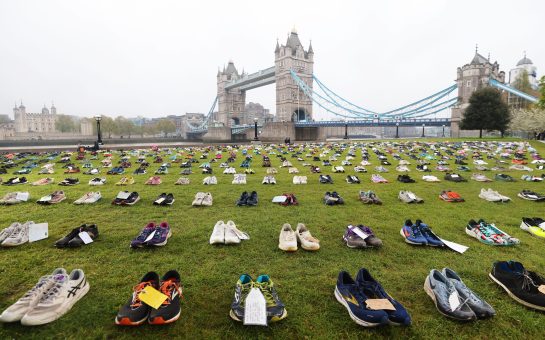The number of people sleeping rough in London surged in the last financial year, with nearly two-thirds of those recorded seen on the streets for the first time.
According to a new report released by CHAIN (Combined Homelessness and Information Network), London saw 10,053 rough sleepers from March 2022 to April 2023, compared to 8,329 from March 2021 to April 2022.
The data also shows a total of 6,391 people had never been seen rough sleeping before, which is nearly two-thirds.
This has led some who work in the charity sector to believe that rough sleeping is becoming more acceptable and that the numbers could keep rising.
Tony Miller MBE has been the CEO of homeless shelter Whitechapel Mission for 42 years.
He said: “There is a lot of frustration, there is a lot of pain, and they truly believe they are not going to escape this trap.
“The number of rough sleepers will continue to rise, the number of people of rough sleepers with mental health issues will continue to rise.
“Rough sleeping is also becoming more of an acceptable thing.
“I’ve been here for a long time, I’ve seen this sector for a long time. If I saw 40 people in a day that was a busy day. We now see 400 people a day and don’t bat an eyelid.
“I have never seen these numbers as high.”
Liz Rutherfoord, CEO of the Single Homeless Project, a homeless charity, added: “I think that one of the things that has gotten worse since the pandemic is the state of the private rented sector and what’s happened since the pandemic started is the freeze on the local housing allowance.”
Borough by borough
A report released by the Office for National Statistics found that between October 2022 and September 2023, Westminster was the most expensive local authority in England to rent in.
The median monthly rent in Westminster during that period was £2,622.
Data released by Statista also shows that Westminster saw the largest number of rough sleepers in 2023 with 2050.
This is almost three times as much as the second highest borough, which is Camden with 719.
Westminster’s rough sleeping number increased significantly between 2022 and 2023, up by 352 people, while Camden’s only increased by 53.
The boroughs with the lowest number of rough sleepers were Sutton with 30, Merton with 63 and Havering with 79.
Only five boroughs recorded less than half of their total as new rough sleepers: Camden with 330 people (46%), City of London with 226 people (47%), Kensington and Chelsea with 87 people (44%), Kingston-upon-Thames with 58 people (49%) and Wandsworth with 84 people (49%).
South London was the area with the highest concentration of new rough sleepers in London, while only one borough from the North, East and West came close to the South’s numbers.
The Southern boroughs of Croydon (73%), Sutton (80%), Bromley (78%), Lewisham (71%) and Merton (75%) all saw percentages of new rough sleepers between 70% and 80%.
Only Enfield in North London (72%), Harrow in West London (71%) and Havering in East London (73%) saw numbers higher than 70%.
Enfield saw 157 new rough sleepers out of 219, Harrow saw 68 out of 96 and Havering saw 58 out of 79.
Mental health
In 2022-23, just over half of the reasons for those seen rough sleeping cited poor mental health, according to the CHAIN data.
From a base of 7,178 people seen rough sleeping in 2022-23, 51% of them cited mental health as their key support need.
This has remained mostly unchanged in previous years, with the previous highest mental health peak being 50% in 2021-22.
Rutherfoord further commented on the state of mental health within the homeless population the Single Homeless Project encounters.
She said: “Our experience has been that there are high levels of ill mental health and the big problem that those people have is that there is inadequate access to mental health support.
“Our staff are finding that they’re having to provide levels of support that they shouldn’t have to give what should be available on a statutory basis which no longer is.”
See the full CHAIN report here.





